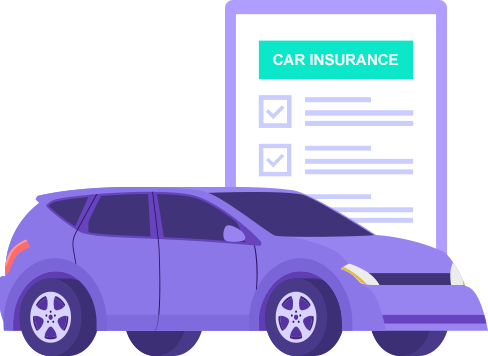In the rapidly evolving landscape of web development, ensuring optimal user experience and performance is paramount. One of the key components to achieving this is effectively managing how and when web pages are updated or interacted with. The Page Visibility API, a powerful tool available in modern web browsers, offers developers a way to enhance their websites' efficiency and responsiveness by detecting when a page becomes visible or hidden. This article explores the intricacies of the Page Visibility API, its benefits, practical applications, and how it can be leveraged to improve both user experience and web performance.
Understanding the Page Visibility API
The Page Visibility API is a browser-based interface that allows developers to determine whether a web page is currently visible to the user or hidden in the background. This API is crucial for optimizing web performance, particularly in scenarios where resource-intensive tasks are involved. By providing information on the visibility state of a page, developers can make informed decisions about when to pause or resume certain activities, such as animations, data fetching, or background processes.
The API is built around the document.visibilityState property, which can have one of three values:
visible: The page is currently visible to the user.
hidden: The page is not visible to the user, either because it is in a background tab or minimized.
prerender: The page is in a prerendering state, meaning it is being prepared for future visibility but is not yet visible.
In addition to the document.visibilityState property, the Page Visibility API includes the visibilitychange event. This event is triggered whenever the visibility state of the page changes, allowing developers to execute specific actions based on whether the page has become visible or hidden.
Benefits of Using the Page Visibility API
Enhanced User Experience: By using the Page Visibility API, developers can improve user experience by pausing or stopping non-essential activities when the page is not visible. For instance, if a user switches to a different tab or minimizes the browser window, developers can pause video playback or stop animations, preventing unnecessary resource consumption and potential disruptions when the user returns to the page.
Optimized Performance: The API helps in optimizing performance by allowing developers to manage background tasks efficiently. For example, developers can suspend data fetching or heavy computations when the page is hidden, thereby reducing the load on the server and conserving bandwidth. When the page becomes visible again, these tasks can be resumed or reinitiated as needed.
Improved Battery Life: On mobile devices, managing background processes effectively can contribute to longer battery life. By pausing resource-intensive operations when the page is not in view, developers can reduce battery consumption, offering a better experience for users on portable devices.
Efficient Resource Management: The Page Visibility API enables developers to manage resources more effectively by avoiding unnecessary operations when a page is not actively being used. This can lead to more efficient use of memory and processing power, contributing to a smoother and more responsive user experience.
Practical Applications of the Page Visibility API
Media Playback Control: One of the most common use cases for the Page Visibility API is controlling media playback. For instance, when a user navigates away from a page with an embedded video or audio player, developers can pause the media to avoid unnecessary data usage and processing. This not only conserves resources but also ensures that the media resumes playback seamlessly when the user returns to the page.
Deferred Data Fetching: Developers can use the Page Visibility API to defer data fetching or AJAX requests when the page is not visible. This approach prevents the browser from making unnecessary network requests, saving bandwidth and reducing server load. When the page becomes visible again, the data fetching can be reinitiated to ensure that the content is up to date.
Background Task Management: Background tasks, such as background synchronization or periodic updates, can be managed using the Page Visibility API. Developers can pause these tasks when the page is hidden and resume them when it becomes visible. This approach helps in optimizing resource usage and maintaining performance.
Interactive Elements: For websites with interactive elements, such as games or dynamic content, the Page Visibility API can be used to pause or stop animations and interactions when the page is not visible. This prevents users from experiencing disruptions or inconsistencies when they switch back to the page.
Implementing the Page Visibility API
To implement the Page Visibility API, developers need to work with two primary components: the document.visibilityState property and the visibilitychange event. Below is a basic example of how to use these components to manage media playback:
javascript
Copy code
// Function to handle visibility changes
function handleVisibilityChange() {
if (document.visibilityState === 'hidden') {
// Pause media playback when the page is hidden
pauseMedia();
} else if (document.visibilityState === 'visible') {
// Resume media playback when the page becomes visible
resumeMedia();
}
}
// Function to pause media playback
function pauseMedia() {
// Code to pause media playback
const mediaElements = document.querySelectorAll('video, audio');
mediaElements.forEach(media => media.pause());
}
// Function to resume media playback
function resumeMedia() {
// Code to resume media playback
const mediaElements = document.querySelectorAll('video, audio');
mediaElements.forEach(media => media.play());
}
// Add event listener for visibility changes
document.addEventListener('visibilitychange', handleVisibilityChange);
In this example, the handleVisibilityChange function checks the current visibility state of the page and pauses or resumes media playback accordingly. The visibilitychange event listener is added to monitor changes in the page’s visibility state and trigger the appropriate actions.
Best Practices for Using the Page Visibility API
Test Across Browsers: While the Page Visibility API is widely supported in modern browsers, it’s important to test your implementation across different browsers and devices to ensure consistent behavior.
Handle Edge Cases: Consider edge cases, such as when the user switches between multiple tabs or uses browser features that affect visibility. Ensure that your implementation handles these scenarios gracefully.
Optimize Resource Usage: Use the Page Visibility API to optimize resource usage by pausing non-essential tasks when the page is hidden and resuming them when the page becomes visible. Avoid overloading the page with unnecessary operations.
Provide Feedback to Users: If your application relies on the Page Visibility API to manage interactive elements, consider providing feedback to users about what is happening when they switch tabs or minimize the browser. This can help in maintaining a smooth user experience.
Stay Updated: The Page Visibility API is an evolving technology, and browser implementations may change over time. Stay updated with the latest specifications and best practices to ensure your implementation remains effective and compatible.
Final Thoughts
The Page Visibility API is a valuable tool for web developers looking to enhance user experience and optimize performance. By providing insights into when a page is visible or hidden, this API enables developers to manage resource-intensive tasks efficiently, improve responsiveness, and reduce unnecessary resource consumption. Whether you're controlling media playback, deferring data fetching, or managing background tasks, the Page Visibility API offers a straightforward and effective way to make your web applications more efficient and user-friendly.
Implementing the Page Visibility API involves working with the document.visibilityState property and the visibilitychange event to tailor your application's behavior based on the page's visibility status. By following best practices and testing your implementation across different browsers, you can leverage this API to create a more optimized and seamless user experience. As web technologies continue to advance, tools like the Page Visibility API will play an increasingly important role in shaping the future of web development.
FAQ:
1. What is the Page Visibility API?
The Page Visibility API is a browser-based interface that allows developers to determine when a web page is visible to the user or hidden in the background. It helps manage resource-intensive tasks more efficiently by detecting changes in the page's visibility state.
2. How does the Page Visibility API work?
The API uses the document.visibilityState property to report the current visibility state of the page, which can be visible, hidden, or prerender. It also includes the visibilitychange event, which is triggered whenever the page’s visibility state changes.
3. What are the possible values of document.visibilityState?
The document.visibilityState property can have one of three values:
visible: The page is currently visible to the user.
hidden: The page is not visible to the user, such as when it is in a background tab or minimized.
prerender: The page is being prepared for future visibility but is not yet visible.
4. How can I use the Page Visibility API to control media playback?
You can use the Page Visibility API to pause or resume media playback based on the page’s visibility state. For example, you can pause video or audio playback when the page becomes hidden and resume it when the page is visible again.
5. What are the benefits of using the Page Visibility API?
Benefits include enhanced user experience by pausing non-essential activities when the page is hidden, optimized performance by managing background tasks efficiently, improved battery life on mobile devices, and better resource management by avoiding unnecessary operations.
6. How do I implement the Page Visibility API in my web application?
To implement the Page Visibility API, use the document.visibilityState property and listen for the visibilitychange event. This allows you to execute specific actions when the page’s visibility state changes. For example, you can pause or resume media playback based on the page’s visibility.
7. Can the Page Visibility API improve website performance?
Yes, the Page Visibility API can improve performance by allowing developers to pause or defer resource-intensive tasks, such as data fetching or background processes, when the page is not visible. This reduces server load and conserves bandwidth.
8. What should I consider when using the Page Visibility API?
Consider testing your implementation across different browsers and devices to ensure consistent behavior. Handle edge cases, such as multiple tabs or browser features affecting visibility, and optimize resource usage by pausing non-essential tasks when the page is hidden.
9. Are there any limitations to the Page Visibility API?
While the Page Visibility API is widely supported, it may not be available in all older browsers or legacy systems. Additionally, its behavior may vary slightly between different browser implementations, so thorough testing is essential.
10. How can the Page Visibility API help with mobile device battery life?
By pausing resource-intensive operations when the page is not in view, the Page Visibility API helps reduce battery consumption on mobile devices. This leads to improved battery life and a better overall experience for users on portable devices.
11. Is the Page Visibility API suitable for all types of web applications?
The Page Visibility API is suitable for a wide range of web applications, particularly those involving media playback, dynamic content, or background tasks. It is useful for optimizing performance and enhancing user experience in scenarios where managing visibility state is important.
12. Where can I find more information about the Page Visibility API?
You can find more information about the Page Visibility API in the official documentation provided by the World Wide Web Consortium (W3C) and on resources like Mozilla Developer Network (MDN). These sources offer detailed explanations, examples, and specifications related to the API.
13. How does the Page Visibility API contribute to web development best practices?
The Page Visibility API contributes to best practices by allowing developers to manage resources efficiently, improve user experience, and optimize performance. By using the API to handle visibility changes, developers can create more responsive and user-friendly web applications.
Get in Touch
Website – https://www.webinfomatrix.com
Mobile - +91 9212306116
Whatsapp – https://call.whatsapp.com/voice/9rqVJyqSNMhpdFkKPZGYKj
Skype – shalabh.mishra
Telegram – shalabhmishra
Email - info@webinfomatrix.com









 English (US) ·
English (US) ·